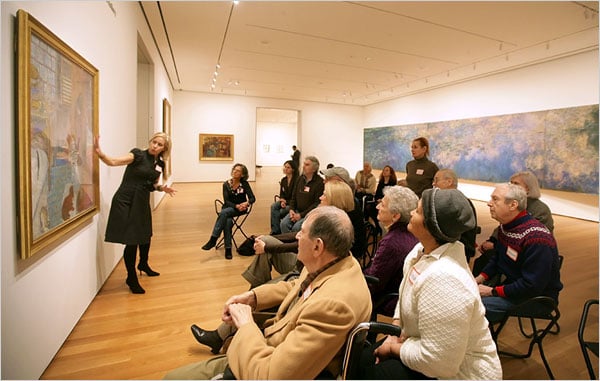Art World
Museum Project Finds Looking at Art Helps Dementia Patients
They feel more joy and less anxiety when viewing art.

They feel more joy and less anxiety when viewing art.

Sarah Cascone

Among the many benefits of art, according to a new project, is its ability to combat the negative effects of dementia. ABC News Australia reports that new research by the Art Gallery of New South Wales has found that dementia patients feel more joy and less anxiety when viewing art.
Inspired by a similar program at New York’s Museum of Modern Art, the institution introduced an access program, one which welcomes dementia patients and their caretakers to visit the museum and talk with one another about the art on view in 2010.
Engaging with the museum collection through the access program benefited patients by alleviating stress and allowing them to stay in the moment. Experiencing a heightened sense of joy when looking at the art, the dementia patients seemed to return to their former selves, especially when they were asked to appreciate a work of art rather than to struggle against their damaged abilities of recollection.
“What was really striking was the observed significance of what we would call ‘in-the-moment pleasure’ that participants were able to demonstrate in their program,” Heather Whitely-Robertson, the gallery’s head of learning and participation told ABC, citing behaviors such as “laughter and smiling, leaning forward to listen, sharing of personal meaning, sometimes reminiscence, but not always… [It was] very much an experience about in-the-present or in-the-moment joy.”

Participants in the Meet Me at MoMA program for those suffering from dementia. Courtesy of the Museum of Modern Art, New York.
For dementia patients, who are losing their memory but retain a full range of emotions, being able to focus on the present provides an escape from the extreme frustration they feel when attempting to remember things.
“You can see the pleasure on people’s faces, you can see the joy of interacting with other people, because quite often when people live with dementia they become reclusive, and this is a great way to bring people out of themselves and give them a sense of value, a sense of appreciation,” added Margret Meagher, the executive director of the Australian Centre for Arts and Health.
Based on the program’s success, the museum is looking to involve a larger number of nursing homes, and it will look to find a way to bring art to home-bound patients unable to visit in person.